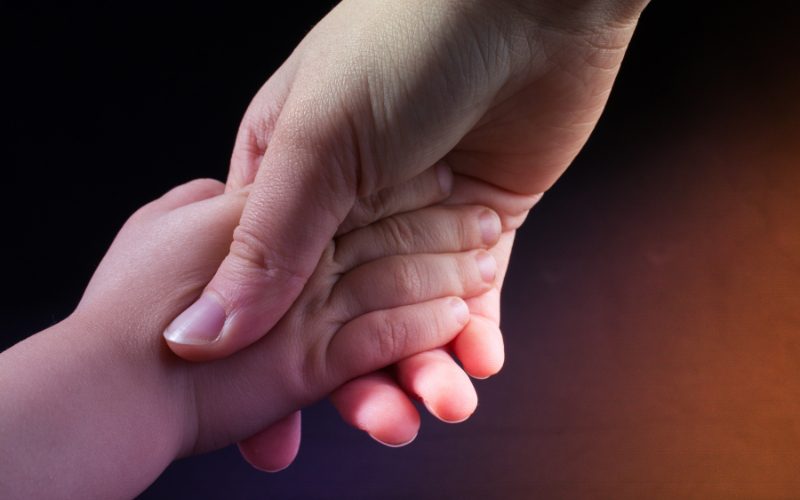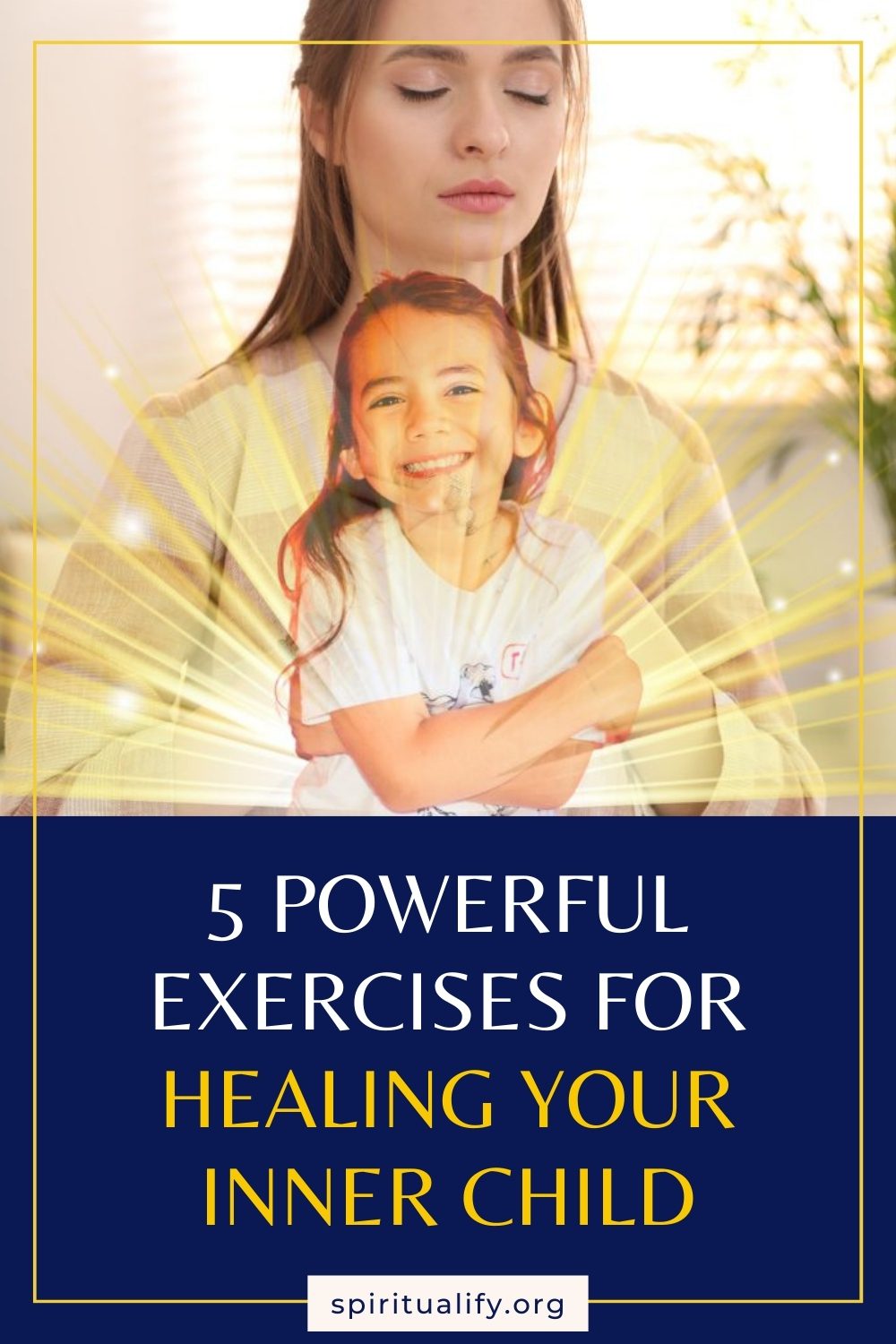5 Powerful Exercises for Healing Your Inner Child
When our wounded inner child cries, it makes us feel very sad. Restoring your connection with your inner child will help you overcome negative feelings.
The concept of the “inner child” refers to a metaphorical “little you” rather than an actual child. It's the aspect of your psyche that retains its childlike qualities, remains innocent, and is full of curiosity.
In order to find this child, we do not need to look very far back in time. We need only dig a little deeper, and we'll find a way to communicate with him. The anguish of this injured child is within each one of us right now, at this very moment.
We often try to forget those difficult times as a method of self-defense and protection against potential future suffering.
Every time we come into contact with the experience of suffering, we have the feeling that we cannot bare it, and as a result, we bury our emotions and memories deep within our unconscious.
We probably have avoided facing this child for many decades. However, the fact that we have chosen to disregard the child does not mean that it does not exist.
We try to put an end to our anguish by locking the child away and removing ourselves from the situation as much as possible. However, running away will not put an end to our suffering; rather, it will only make it last longer.
The wounded child begs for attention and affection, but we respond in the opposite way. We try to escape because we are terrified of enduring pain.
This inner child is there, but we don't even know it. The reality that our inner child is wounded is something we are unable to see. It's a kind of ignorance.
When we realize that we have neglected our inner child, we are filled with a profound sense of compassion for it and we start to cultivate the energy of mindfulness.
This energy will embrace and heal us, and it will heal the inner child within us.
Why Should Your Inner Child be Healed?
Things that take place in our youth have the potential to make an indelible impression on our psyche.
The loss of a childhood friend, physical or mental abuse, or a broken family can all be detrimental to someone's “inner child.”
You may feel as though you've recovered from the injury. However, the pain that was caused by it will remain with you for the rest of your life, and you may remember it at unexpected times.
The part of your personality known as your “inner child” behaves and feels like a child. It is common for your “inner child” to make their voice heard at times when you feel as though you have no control over your behavior or how you react to a situation.
What's an Inner Child?
Our “inner child” does not refer to the portion of one's brain that is responsible for having childlike thoughts. Instead, the inner child is the aspect of your subconscious that is childlike
It is a reflection of the “positive” and “negative” aspects of the child we once were when we were younger.
Our unmet needs and feelings of repressed emotion from childhood, our natural enthusiasm and creative potential, as well as our childlike innocence, are all within us.
These repressed feelings are connected to everything you were taught not to feel as a child when you wanted to receive love. The end result was that the only way to get attention was to obey.
This will undoubtedly happen when our parents, our upbringing, and our society, in general, instill in us certain rules and norms with the intention of assisting us in maturing into fully functional human beings.
In fact, it is for the best that this is happening. Understanding our own limitations and developing as people means we first experience those limitations.
On the other hand, the consequence of this is that the hurt, rage, and trauma that result from feelings of rejection are still part of you in the form of your inner child.
The following are some examples of things that we learned during our upbringing that contributed to to feelings of rejection:
“Don't tell me what you really think”
“Don't even bother applying for that promotion because you're not smart enough”
“You have to make your parents proud.”
The practice of connecting with our inner child focuses on bringing these feelings to the surface in order to enable us to discover the root causes of the challenges we face as adults.
In today's article, we'll also show you 5 surprisingly effective ways to heal your inner child.
Why's it Important to Heal Your Inner Child?
We bring our wounds from our childhood into adulthood, whether they were simple or complex traumas, ranging from emotional neglect to physical abuse.
Many adults have the wrong impression that they are the only ones who experience these types of pain and suffering; consequently, they bury their emotions because they believe that other adults act in a similar manner.
We are not in any way wrong or flawed, this is why it's important to heal our inner children. To heal the shame that comes with having feelings.
As we work on meaning the wound of our inner child, we start to create the protection and stability that our younger selves have always needed.
Thus, the positive characteristics of our inner child are given the opportunity to shine through. We tap into our natural gifts as well as our innate curiosity and infinite love.
Signs Your Inner Child Needs Healing
1. Feeling very reactive
When we feel very reactive in situations, when we suddenly feel very distant or irritable; these are all signs that our wounded inner child is beginning to show up in our lives.
When our adult selves try to manage or control the outside world, our inner selves feel awkward and out of place.
2. You overvalue independence
This can include saying things like “I don't need anyone” over and over again and refusing to allow yourself to ask for help.
3. Destructive coping behavior
This can take the form of trying to help yourself by drinking excessively, shopping, cheating, gambling, eating, or even procrastinating.
4. Poor emotional and mental health
This can manifest itself in a variety of ways. For example:
– Depression
– Feeling unmotivated
– The desire to spend more and more time alone or with friends
– Sleep disorders
– Weight gain or loss
– Less focused or productive at work
– Increased anxiety in various areas of life
5. Recurring patterns in your relationships
Those who suffer from attachment trauma have a tendency to unconsciously repeat the attachment patterns they experienced as children in their adult relationships.
This indicates that they are, to a large extent, reliving the traumatic experiences they had as children.
Compassionate listening
Most of the time, when we talk about compassionate listening, we are referring to the act of listening to another person.
But we also need to pay attention to the voice of our wounded inner child. There are times when he needs all of our attention.
This inner child will materialize from the recesses of your mind and demand that you pay attention to them.
If you pay attention, you will be able to hear his or her voice pleading for help. Instead of focusing on what is going to happen next, you should take a step back and give the hurt child a gentle hug.
You are able to speak to the child directly in the language of love and say things like, “In the past, I have chosen to ignore you. I am truly sorry that I turned my back on you and walked away. I will hug you.”
You can say, “Honey, you can count on me to support you. I promise that I will look after you well. I am aware of how much pain you are enduring right now. I've been so preoccupied that I forgot about you, but I've finally found a way to get back to you.”
If it becomes necessary, you may have to cry along with the child. You are free to take a seat and practice deep breathing with the child whenever it is necessary.
You should have multiple conversations with your child each day. The process of healing can only begin at that point.
You can reassure your child that you will never abandon them or leave them unattended again by giving them a warm hug.
Your inner child has been left alone for such a long time. Because of this, you should get started immediately. When else are you going to get around to doing it if you don't do it now?
Healing will take place if you are able to find a way to reconnect with him and spend five to ten minutes per day attentively listening to what he has to say.
Invite your inner child when you're about to go on a wonderful experience, like claiming a picturesque mountain.
Invite him to enjoy the experience with you as you watch the Sun go down. You will be able to heal your inner child if you continue to do this for a few weeks or months.
With time and effort, we are able to realize that our hurt child is not just a reflection of ourselves. Our hurt child can represent multiple generations.
Our mother has been in pain her whole life. Our father experienced some pain. Our parents were unable to heal the broken child that still lived inside of them.
Therefore, when we embrace our wounded inner child, we also embrace all of the hurt children that have existed throughout our generations.
This practice has been carried out not only by us but also by many of our previous generations. Our ancestors didn't know how to properly care for their wounded inner child, so instead, they handed down their trauma to us.
The goal of our practice is to break out of this cycle. If we are able to heal our wounded child, not only will we be able to set ourselves free, but we will also be able to assist in the release of those who have harmed or abused us.
We suffer because we have not been touched by compassion and understanding. If we are able to muster up the energy of mindfulness, understanding, and compassion for our wounded inner child, we will experience significantly less suffering.
When we cultivate mindfulness, we open the door to compassion and understanding, which in turn makes it easier for other people to love us.
In the past, we might have viewed everything with a healthy dose of skepticism. Having compassion enables us to connect with other people and helps repair broken communication.
The people around us, including our family and friends, probably also have a wounded inner child. If we have been successful in helping ourselves, then we should be able to help them as well.
When we have made peace with ourselves, it is much easier to maintain healthy relationships with others. Take care of yourself. Your body, your feelings, and your perceptions all need you in order to function properly.
Your inner child is dependent on you. You acknowledge your pains and suffering. Practice mindful walking and mindful breathing. Do everything mindfully so that you can truly be there and experience love in your life.
The function of mindfulness
The first function of mindfulness is acknowledging something without becoming defensive about it. At any point in time, we have the ability to pause and become conscious of our inner child.
All that we have to do after we become aware of the hurt child is to greet them and acknowledge that they are there. When we have established that we have an inner child, the second function of mindfulness is to accept and nurture that child.
This is a very enjoyable form of physical activity. Instead of fighting our emotions, we take good care of ourselves.
Mindfulness brings an ally – concentration. Some relief will begin to set in after only a few minutes have passed since we have acknowledged and lovingly embraced our inner child.
Even though the challenging feelings won't go away, at least we won't suffer as much from them.
The third and final function of mindfulness is to calm and soothe our challenging emotions, which comes after the first two functions of recognizing and accepting our inner child.
Just by gently holding this child, we calm our difficult emotions and can begin to feel at ease. We will be able to see the origins of these mental formations when we accept our powerful feelings and approach them with mindfulness and concentration.
We will then know the source of our suffering. When we finally understand what's going on, the amount of anguish we feel will drastically decrease.
We are able to focus on a single topic if we have sufficient concentration. With concentration, the energy of seeing becomes more powerful and insight is possible.
Knowledge liberates us. When we are mindful, and when we know how to keep ourselves mindful, we will also be focused. When we have mastered the art of maintaining our concentration, we will then be able to gain insight.
The energy of mindfulness enables us to look more closely and acquire the insight that is necessary for transformation to become possible.
How to Heal Your Wounded Inner Child
The memories of the things that happened to us when we were younger are buried deep within us. They continue to exist and have an impact on the present.
Developing a relationship with our inner child helps heal the emotional issues that arise as a result of not honoring this part of ourselves in our adult lives. Our inner child is the source of our vitality and creativity.
There are many stresses in our adult lives that threaten to extinguish the flame of our inner child that lives within us. You have the ability to withstand this pressure by connecting to your inner child.
Here are 5 quick and easy ways to get back in touch with your inner child.
1. Reconnect with your childhood
“Time traveling” to your childhood is one approach you can take. You can accomplish this by compiling a list of the activities and interests that delighted you when you were a child.
Take some time to let your mind wander and relive those moments as if they were happening just yesterday.
2. Identify your specific inner child
There are certain behaviors that most people engage in throughout their childhoods. Look at what patterns resonate with you to see what shows up in your life today. For example:
– The abandoned child: This type of inner child is often the result of a lack of adequate attention from his parents. It may be because parents are too busy to pay attention to their child or because they choose to abuse or neglect their child.
– The playful child: This child is healthy but often neglected in adulthood. Do you remember a time when you felt carefree, spontaneous, and able to enjoy yourself without any feelings of guilt or anxiety?
– The anxious child: This child has been subjected to a great deal of criticism and, as a result, regularly experiences anxiety whenever they do not receive an adequate amount of validation.
3. Write a letter to your inner child
If you believe that the life you are leading does not honor your inner child, you may want to apologize to him.
You could also write a letter where you express your desire to forge a more robust connection with your inner child.
4. Pay attention to your feelings
Your inner child is sensitive and vulnerable. It is important to pay attention to his worries and insecurities. However, it is also important to pay attention to the feelings of joy and wonder that often surface when you connect with your inner child.
Asking yourself “How am I feeling right now?” multiple times throughout the day is a healthy practice. But what if you find it difficult to initiate that inner conversation with yourself?
This is exactly what you need: a spark that will reconnect you with your emotions and allow you to move forward on your path to recovery.
5. Be mindful of your inner critic
Spending time with my “inner child” has been one of the biggest challenges for me, as I would feel like a fool. Since I am an adult, it seemed ridiculous to try to make a connection to the emotions I experienced when I was a child.
That was just my inner critic. It is essential to pay attention to that voice, but you should also pay attention to the voice of your inner child.
All of these voices have something important to say, and by listening to them, you're giving them the opportunity to influence who you are.
Helen is the founder of Spiritualify.org where she covers all things astrology — from horoscopes and zodiac guides to retrograde alerts and moon updates. She also writes about other mystical lifestyle topics, such as numerology, crystal healing, tarot, dream interpretation, and more.
























